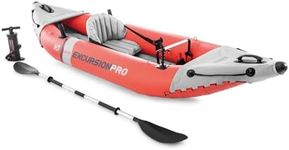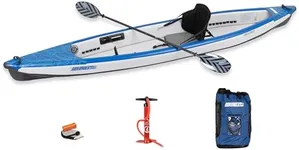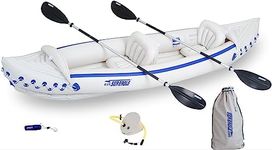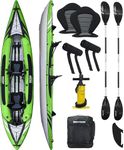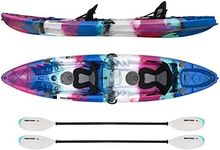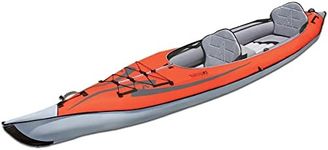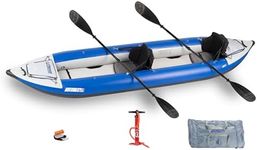Buying Guide for the Best Inflatable Kayaks
Choosing the right inflatable kayak can greatly enhance your paddling experience, whether you're a beginner or an experienced kayaker. Inflatable kayaks are known for their portability, ease of storage, and versatility. When selecting an inflatable kayak, it's important to consider several key specifications to ensure you get the best fit for your needs. Here are the main factors to consider and how to navigate them.MaterialThe material of an inflatable kayak affects its durability, weight, and performance. Common materials include PVC, Hypalon, and Nitrylon. PVC is lightweight and affordable but may not be as durable as other materials. Hypalon is more durable and resistant to UV rays and chemicals, making it ideal for long-term use. Nitrylon is eco-friendly and puncture-resistant but can be heavier. Choose a material based on how often you plan to use the kayak and the conditions you'll be paddling in.
Weight CapacityWeight capacity refers to the maximum weight the kayak can safely carry, including the paddler and any gear. It's important to choose a kayak with a weight capacity that exceeds your total weight to ensure stability and performance. For solo paddlers, a capacity of 250-300 pounds is usually sufficient. For tandem kayaks or those carrying extra gear, look for capacities of 400 pounds or more. Consider your weight and the weight of your gear to select the appropriate capacity.
Length and WidthThe length and width of an inflatable kayak influence its speed, stability, and maneuverability. Longer kayaks (12 feet and above) are generally faster and track better, making them suitable for open water and long-distance paddling. Shorter kayaks (under 10 feet) are more maneuverable and easier to handle, ideal for rivers and tight spaces. Wider kayaks offer more stability, which is great for beginners or those who prioritize stability over speed. Consider where you'll be kayaking and your skill level when choosing the length and width.
Number of ChambersInflatable kayaks typically have multiple air chambers for safety. If one chamber gets punctured, the others can keep the kayak afloat. Most kayaks have 2-3 main chambers, but some high-end models may have more. More chambers generally mean better safety and stability. If you plan to kayak in remote or challenging conditions, opt for a kayak with more chambers for added security.
Setup TimeSetup time refers to how long it takes to inflate and prepare the kayak for use. Some kayaks can be set up in as little as 5-10 minutes, while others may take 20 minutes or more. If you value convenience and quick setup, look for kayaks with efficient inflation systems and fewer parts. Consider how much time you're willing to spend on setup and choose accordingly.
AccessoriesMany inflatable kayaks come with accessories such as paddles, pumps, repair kits, and carrying bags. These can add value and convenience, especially for beginners who may not have their own gear. Check what accessories are included and consider if they meet your needs. If you already have some equipment, you might prioritize other features over included accessories.
